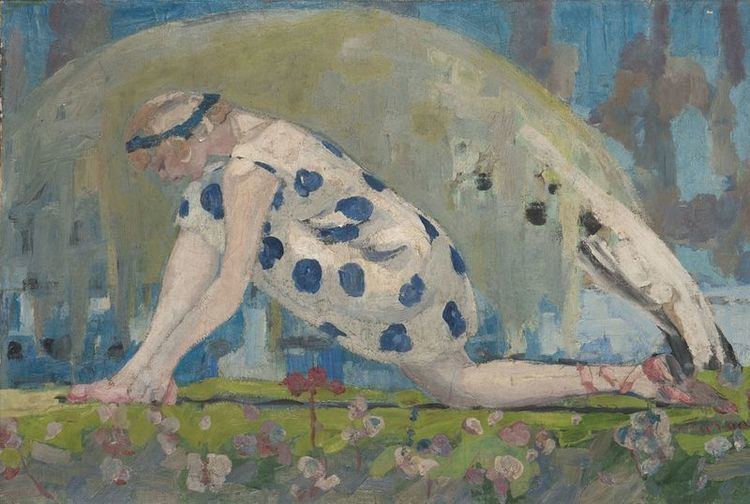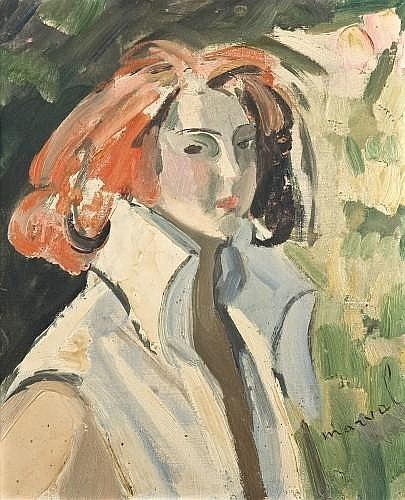Name Jacqueline Marval Role Painter | Died 1932, Paris, France | |
 | ||
JACQUELINE MARVAL PEINTRE DAUPHINOISE (1866-1932)
Jacqueline Marval was the pseudonym for Marie Josephine Vallet (1866–1932), a French painter, lithographer, and sculptor.

Vallet was born 19 October 1866, in Quaix-en-Chartreuse into a family of schoolteachers. She separated from her husband in 1891 and earned a living making waistcoats.

In 1894, she met the painter François Joseph Girot and began living with him in Paris as his lover. The next year, she met Jules Flandrin, another painter and a student of Gustave Moreau. The two fell in love, and Vallet left Girot to move in with Flandrin in Rue Campagne-Première, in the Montparnasse area. She would live with him as his companion and mistress for 20 years.

Vallet's first works were rejected from the 1900 Salon des Indépendants, but she succeeded in having a dozen paintings shown in that exhibition the following year, under the pseudonym of Jacqueline Marval. The art dealer Ambroise Vollard bought them all.

In 1902, several of her paintings were displayed alongside works by Flandrin, Albert Marquet, and Henri Matisse in a gallery in Rue Victor-Massé curated by Berthe Weill, who was particularly interested in promoting the works of female artists living in Paris.
In 1911, Marval was chosen by a jury made up of Gabriel Astruc, the sculptor Antoine Bourdelle, and the painters Maurice Denis and Édouard Vuillard to decorate the foyer of the new Théâtre des Champs-Élysées. She created a series of twelve paintings on the theme of Daphnis and Chloe, completing them in 1913. The same year, she protested against the removal from the Salon d'Automne of Kees van Dongen's The Spanish Shawl, and became friends with van Dongen, setting up her studio near his.
In 1913, Francis Picabia displayed Marval's 1903 painting The Odalisques in the Armory Show, an important exhibition of modern art in New York. This painting depicted five women: three seated nude, one dressed and reclining on her elbow, and one standing and holding a tray. Guillaume Apollinaire wrote of this painting in the Chronique des arts that "Mme. Marval has given the measure of her talent and has achieved a work of importance for modern painting." The same painting was displayed at the July 1916 Salon d'Antin organized by the poet André Salmon, beside Picasso's Les Demoiselles d'Avignon.
Marval's works began to be recognized across Europe; she exhibited in Basel, Barcelona, Oslo, the Venice Biennale, Winterthur, and Zurich. However, she lost interest in painting after several years; rather, she liked to dance, dress as a "précieuse ridicule", dye her hair red, and wear green hats which she made herself. She was given the epithet "the fairy of the Belle Époque."
Beginning in 1923, Marval was active in favor of the creation of modern art museums in Paris and Grenoble. She died in Paris in 1932; after her death, her works were held in the galerie Druet before it was closed in 1938 and they were sold. Her painting Portrait of Dolly Davis, 1925 is in the collection of the Milwaukee Art Museum.
Stylistically, "Marval's paintings are provocative and edgy, challenging and unusual, she was an important modernist at the earliest moments of the movement."
